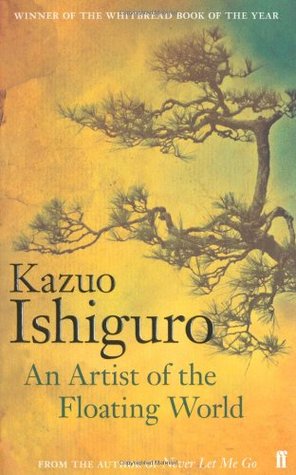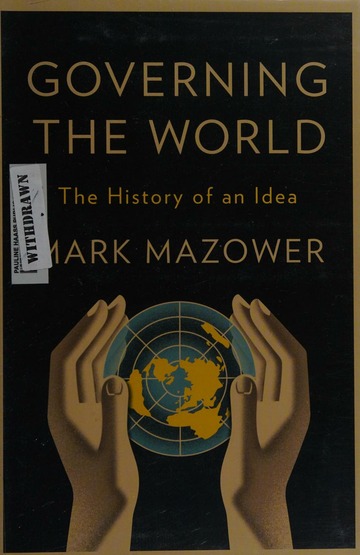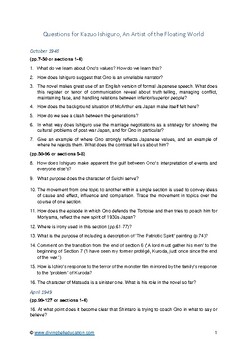An Artist Of The Floating World Review
An Artist of the Floating World is a novel by Nobel Prize-winning author Kazuo Ishiguro. It tells the story of an elderly Japanese man, Masuji Ono, who looks back on his life and reflects on the changes that Japan has undergone since World War II. The book examines themes of guilt, redemption, and cultural identity as Ono reflects on his own past and the changing society around him. Reviews of the novel have praised Ishiguro’s ability to explore these themes in a poignant and meaningful way. Critics have also praised the novel’s subtle yet powerful critique of Japan’s traditional hierarchical culture and its embrace of western ideals.
Overview of the Novel
An Artist of the Floating World by Nobel Prize winner Kazuo Ishiguro is a captivating novel about post-World War II Japan and the consequences of war on people’s lives. The novel follows the life of Masuji Ono, an elderly painter, as he reflects on his life and the changes that have occurred in Japan since the war. Through Ono’s story, Ishiguro examines the themes of guilt, remorse, and identity. Ono’s journey is filled with both hope and despair, as he struggles to come to terms with his past and to find peace in the present.
The story is told through Ono’s perspective, and the reader is able to experience the transformation of Japanese society through Ono’s eyes. Ishiguro has crafted a unique and complex narrative that is both beautiful and heartbreaking at the same time. Through Ono’s story, readers can gain insight into the personal struggles of a generation of Japanese people who were forced to confront a new reality after the war.
An Artist of the Floating World is an insightful and powerful look at the effects of war and the importance of coming to terms with one’s past. It is a novel that will stay with the reader long after the final page has been turned.
Plot Summary
An Artist of the Floating World by Kazuo Ishiguro is a novel set in postwar Japan and tells the story of Masuji Ono, an aging painter who was a former member of the ruling class. In the novel, Masuji reflects on his past life and the changes in his country since the end of World War II. He must grapple with his conflicted feelings of guilt and remorse for his service to the Imperial cause during the war and his deep-seated nostalgia for the traditional culture of his homeland. The narrative follows Masuji as he tries to make sense of his life and the world around him, while at the same time struggling to reconcile his past with his present. Along the way, he must come to terms with the mistakes and wrongs he committed during the war, and try to find a way to make amends for them. Ono’s story is ultimately a poignant look at the fragility of life and the power of memory.
Character Analysis
An Artist of the Floating World, written by Nobel Prize-winning author Kazuo Ishiguro, follows the story of Masuji Ono, an aging artist living in post-war Japan. Ono is haunted by his past, which includes his involvement in Japan’s imperialistic actions during World War II. Through Ono’s narrative, Ishiguro paints a vivid portrait of a man struggling to come to terms with his mistakes and the deep-rooted guilt of his actions.
The novel features an array of captivating characters, each with their own complex motivations and struggles. Masuji Ono is a man of strength and conviction, but is also weighed down by his past and the mistakes he has made. His daughter, Noriko, is a strong-willed young woman who is determined to forge her own path in life despite her father’s expectations. Ogata-San is a powerful and influential figure who is determined to make Japan great again and to make Ono pay for his perceived transgressions.
The characters in An Artist of the Floating World are complex and dynamic. Through their struggles and triumphs, Ishiguro is able to explore themes of guilt, regret, and redemption in a unique and captivating way. By examining the characters’ motivations and choices, readers are able to gain a deeper understanding of the human condition and the consequences of our actions.

Themes and Symbols
The Artist of the Floating World by Kazuo Ishiguro is a moving novel that explores human suffering and resilience. Through the use of vivid imagery, Ishiguro brings to life the themes of grief, loss, and the search for identity. The book follows the journey of an elderly Japanese man, Masuji Ono, as he reflects on his past and shares his memories with the reader. Along the way, Ishiguro explores the themes of memory, guilt, and the consequences of choices made in the past. Additionally, Ishiguro uses symbols and metaphors throughout the novel to illustrate his themes. These symbols include the titular “floating world,” which is a reference to the fleeting nature of life, and the art of Noh theater, which is used to symbolize Masuji’s inner turmoil. Through these symbols and themes, Ishiguro creates a powerful story that speaks to the human experience.
Critical Reception
Critical reception of An Artist of the Floating World has been largely positive. The novel was a finalist for the Pulitzer Prize for Fiction, and it won the 1986 National Book Critics Circle Award for Fiction. It has been praised for its vivid depictions of Japanese life in the post-World War II era. Critics have also praised the novel for its intricate plot and masterful use of symbolism. Many have also noted the novel’s exploration of themes such as identity, memory, and loyalty. Overall, An Artist of the Floating World has been hailed as a remarkable accomplishment in modern fiction.
Impact of the Novel on Postcolonial Discourse
The Artist Of The Floating World by Nobel Prize-winning author Kazuo Ishiguro is one of the most widely-read postcolonial novels in the world. The story follows the life of an elderly Japanese artist, Masuji Ono, who is haunted by his past transgressions during World War II. Through his memories and reflections, Ishiguro reveals the personal and social struggles of post-war Japan and its relationship with other colonial countries. In this review, we will analyze the impact of the novel on postcolonial discourse, and how it has shaped our understanding of the postcolonial world.
The novel paints a picture of a world in transition, where some characters embrace the new world while others are resistant to it. Ishiguro’s use of language reflects the political and cultural changes taking place in Japan. His use of metaphor and imagery gives a vivid description of a world that is in flux. Through his characters, Ishiguro explores the complex relationship between the colonizer and the colonized. He also examines the role of memory in the formation of identity, and how it can be used to challenge existing power structures.
The novel has had a significant impact on postcolonial discourse, as it has helped to shape our understanding of the postcolonial world. It serves as a reminder of the importance of examining history and culture through an anti-colonial lens. It also encourages readers to think critically about how colonialism has shaped the world we live in today. Furthermore, the novel serves as a reminder of the need to challenge existing power structures and to be mindful of our own biases.
Overall, The Artist Of The Floating World is a powerful and thought-provoking postcolonial novel. It encourages its readers to think critically about the power dynamics of the colonial world and examine the impact of colonialism on our current lives. Through its vivid imagery and complex characters, it provides an insightful look into the postcolonial world and its ongoing struggle for liberation.
FAQs About the An Artist Of The Floating World Review
Q1: What is the plot of An Artist of the Floating World?
A1: An Artist of the Floating World is a novel by Nobel Prize-winning author Kazuo Ishiguro that follows the story of Masuji Ono, an aging painter living in post-World War II Japan. As he reflects on his life and his former career as a painter, Masuji is forced to confront the choices he made during Japan’s imperial expansion and the consequences of those decisions.
Q2: Who is the author of An Artist of the Floating World?
A2: An Artist of the Floating World is written by the Nobel Prize-winning author Kazuo Ishiguro.
Q3: What themes are explored in An Artist of the Floating World?
A3: An Artist of the Floating World explores themes of guilt, regret, and the consequences of decisions made during times of conflict. Additionally, the novel also examines the relationship between art and politics, and how the two can interact and influence one another.
Conclusion
The Artist of the Floating World is an incredible novel that weaves together a complex story of family, culture, and identity. It is a novel that is both heartbreaking and beautiful. It explores the themes of love, loss, and identity in the context of the Japanese culture. The characters are complex and multi-dimensional, and the story will stay with you long after you have finished reading. The Artist of the Floating World is a powerful work of literature that is sure to be a classic for generations to come.






